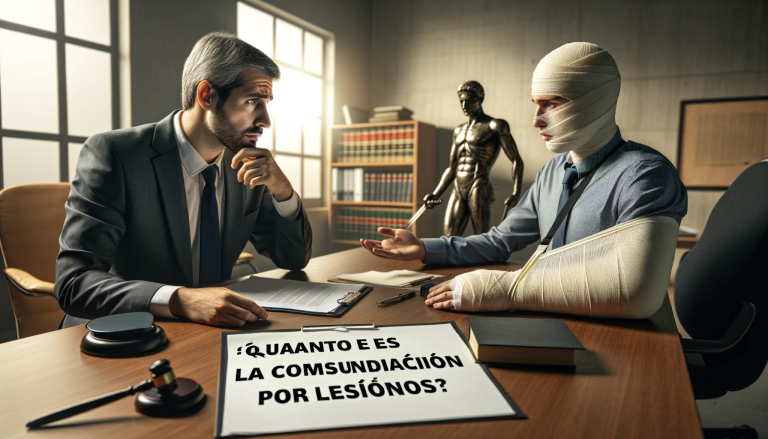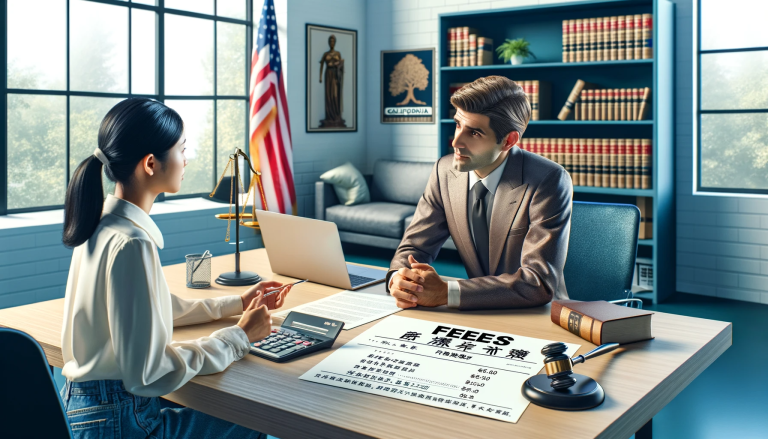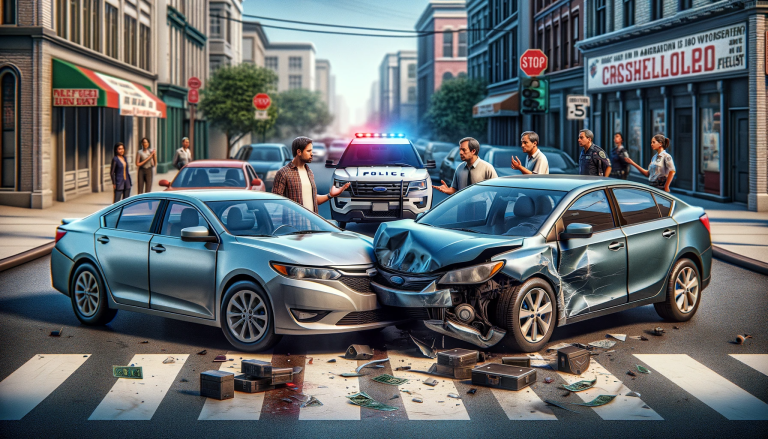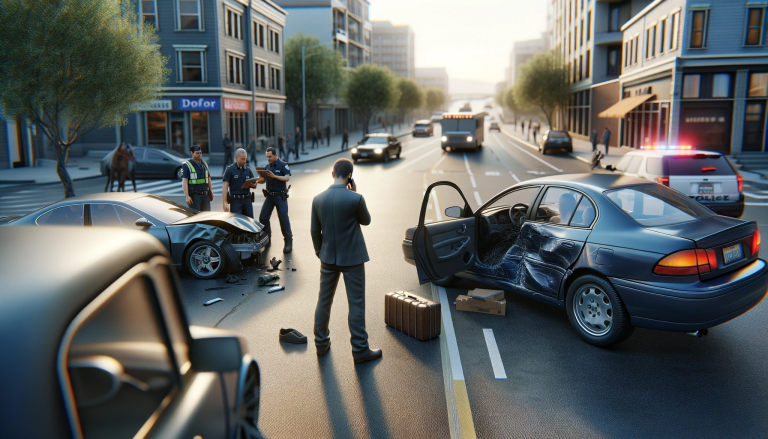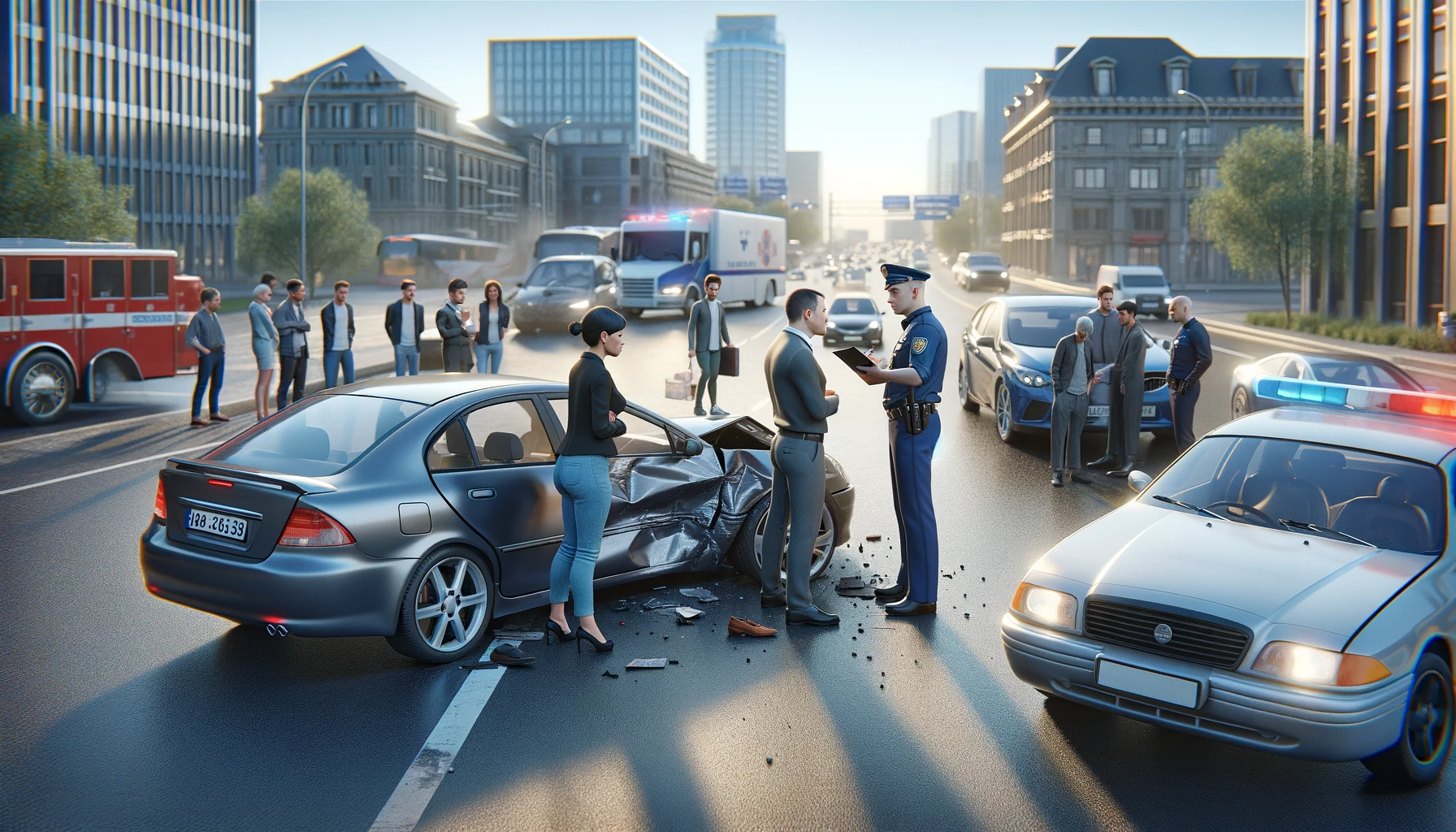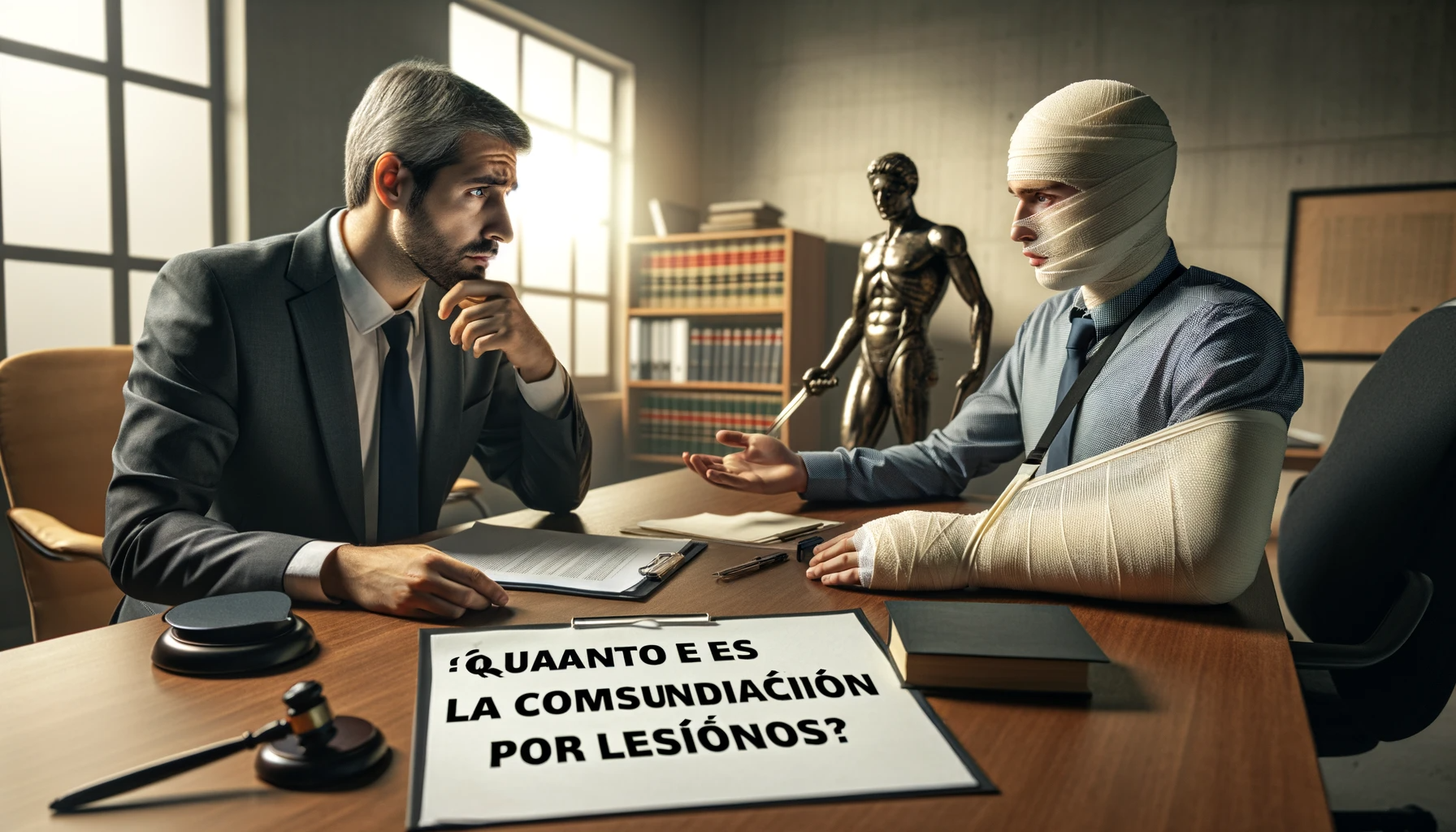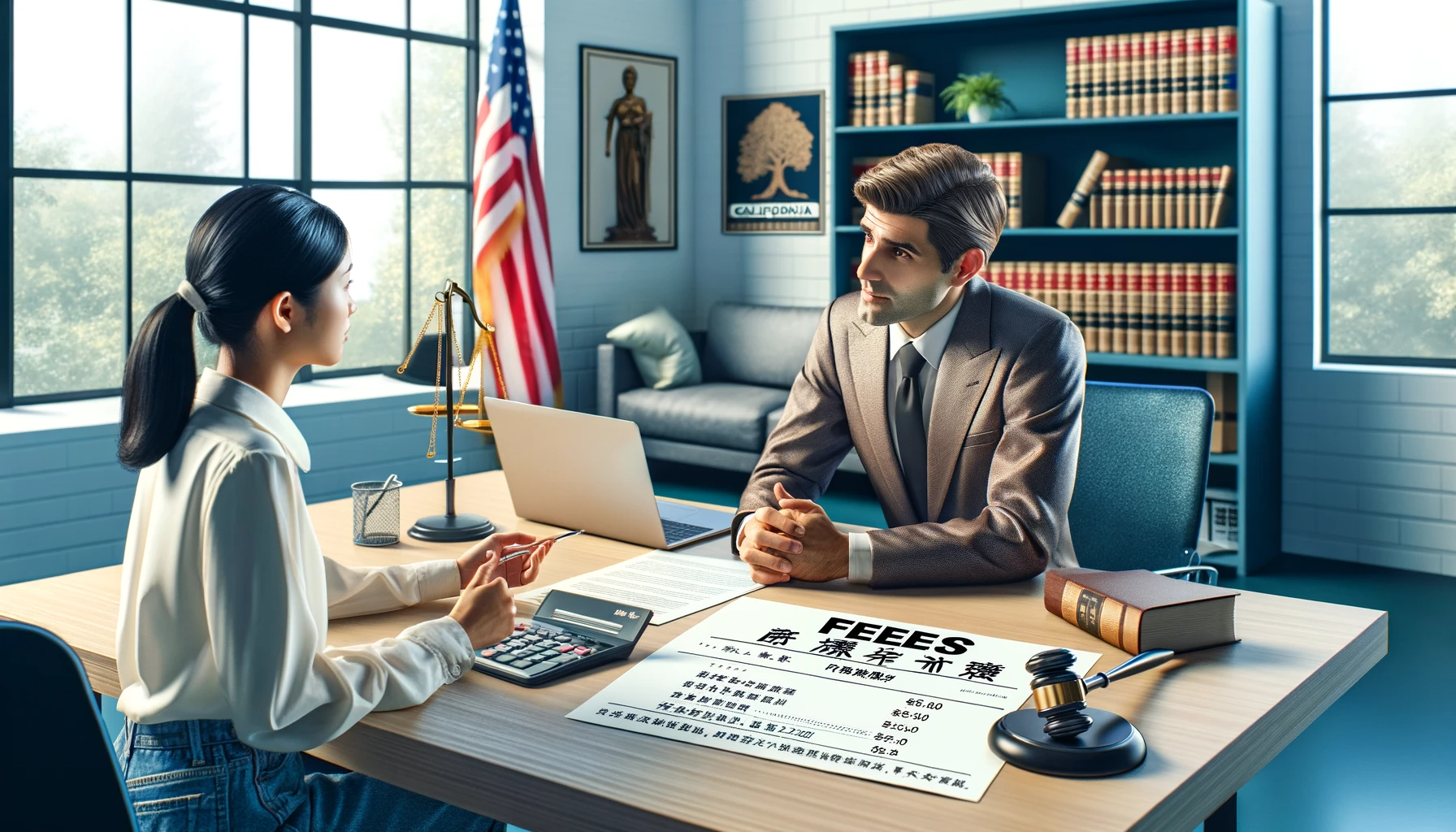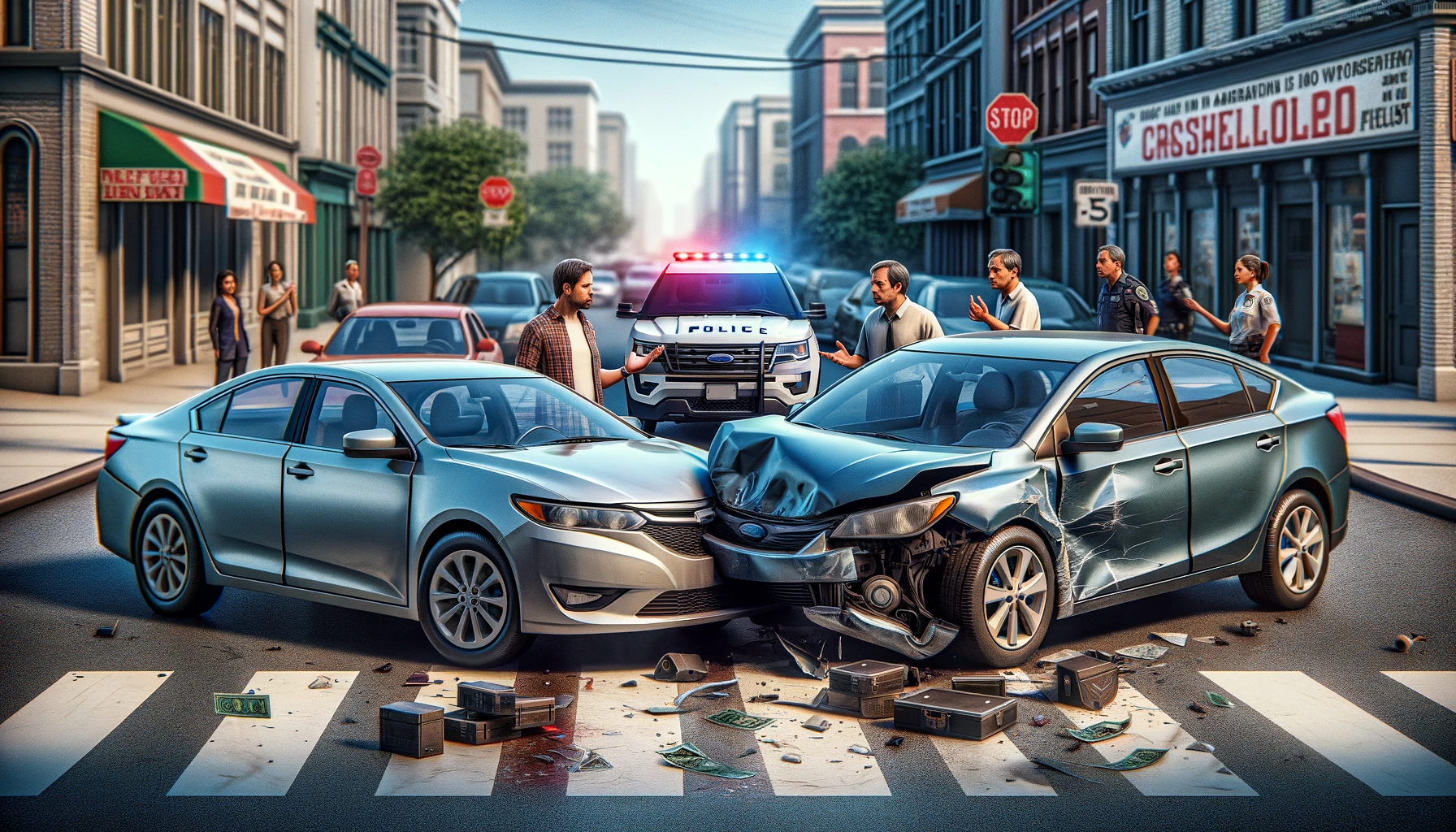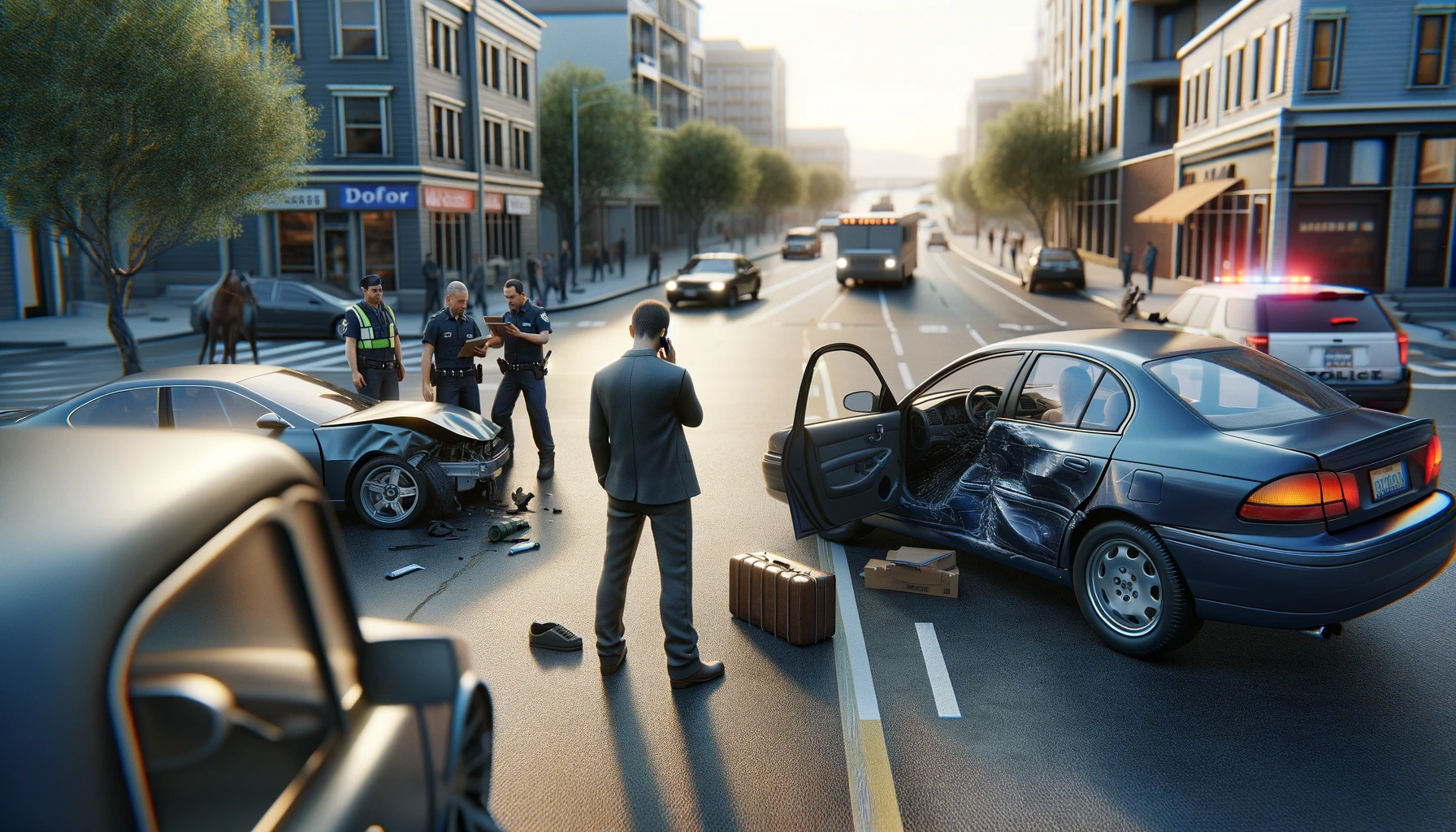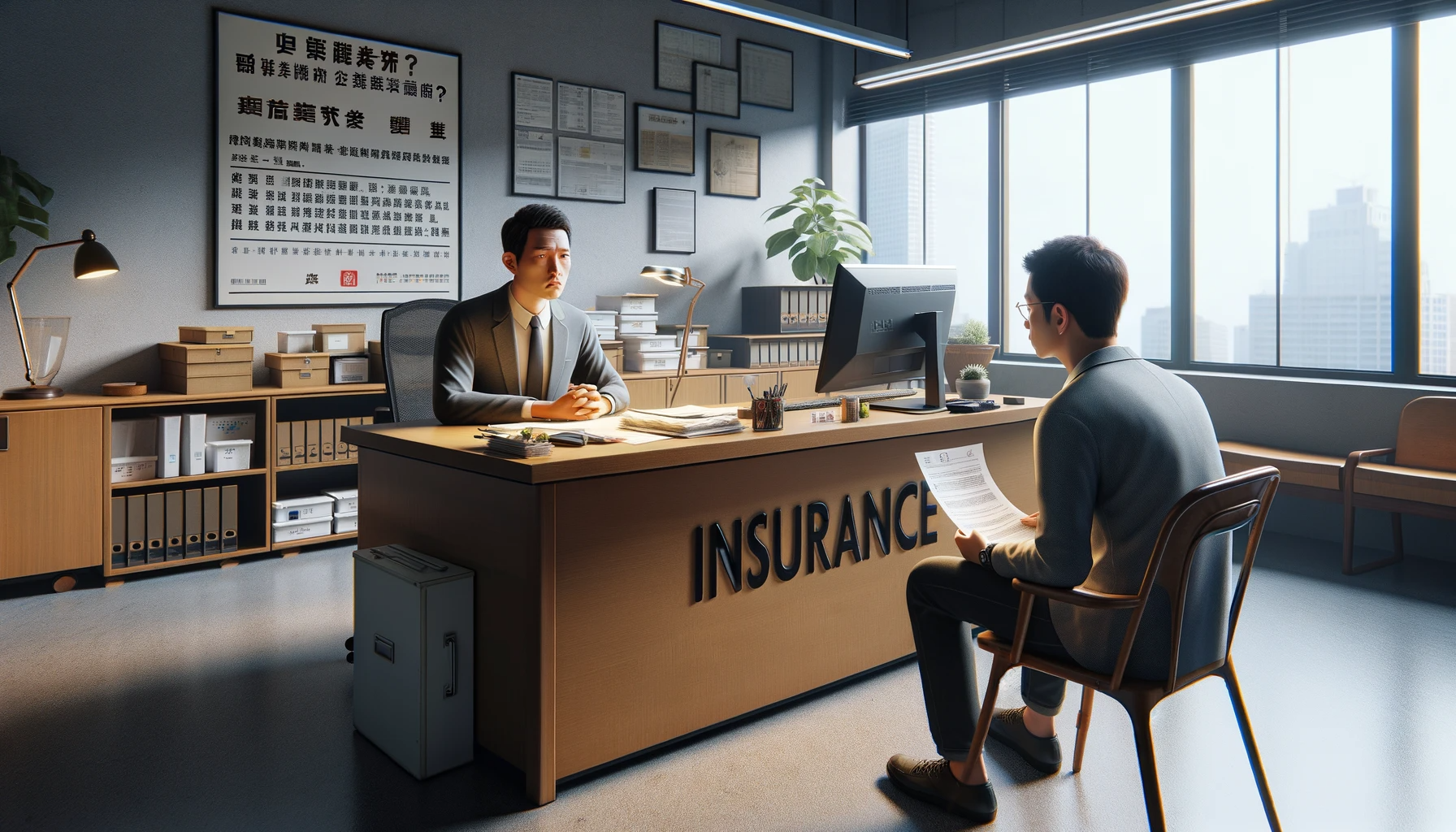Legal Resources for Auto Accidents and Types of Motorcycle Accidents in Transit: A 7th Grade English Exploration
Understanding auto and motorcycle accidents can seem complicated, but don't worry! We're going to break it down step-by-step, just like peeling an orange. By the end of this, you'll know all about the types of accidents and the legal help you can get if you're ever involved in one.
What are Auto Accidents?
Auto accidents happen when vehicles crash into each other or something else, like a tree or a pole. They can be minor, with just a scratch or two, or major, causing serious damage and injuries.
Common Causes of Auto Accidents
Auto accidents can happen for many reasons, but some of the most common causes include:
- Distracted driving, like texting or eating while driving.
- Speeding, which reduces the time to react.
- Bad weather conditions, such as rain or snow.
- Running red lights or stop signs.
Rear-End Collisions
A rear-end collision occurs when one vehicle crashes into the back of another. This type of accident is commonly caused by tailgating, which is following another vehicle too closely, or by the trailing driver failing to notice that traffic ahead has slowed or stopped. Distracted driving, such as texting, talking on the phone, or other in-car distractions, also significantly contributes to rear-end collisions. The impact can cause whiplash injuries to the occupants of the front vehicle and extensive damage to both vehicles. Ensuring a safe following distance and staying alert can help prevent these accidents.
Side-Impact Collisions
Side-impact collisions, often referred to as T-bone accidents, happen when the front of one vehicle crashes into the side of another. These accidents frequently occur at intersections when one driver fails to yield the right-of-way, runs a red light, or stops sign. The force of impact can cause severe injuries, particularly to the occupants on the side of the vehicle that is struck. Modern vehicles often come equipped with side airbags and reinforced doors to mitigate
Injury risks, but the severity can still be high due to the lack of significant crumple zones on the sides of vehicles.
Head-On Collisions
Head-on collisions are among the most severe and deadly types of
Car accidents. They occur when the fronts of two vehicles collide, often at high speeds. These accidents usually result from drivers traveling in the wrong direction, either due to confusion, impaired driving, or overtaking errors. The force of impact is doubled in a head-on collision, leading to devastating injuries or fatalities. Preventive measures include staying alert, avoiding distractions, and adhering to road signs and markings that indicate proper travel directions.
Multi-Vehicle Pile-Ups
Multi-vehicle pile-ups involve three or more vehicles and typically occur on highways or freeways. These accidents often start with a single collision that triggers a chain reaction, especially in poor visibility conditions like fog, heavy rain, or snow. The chaos and sheer number of vehicles involved make these pile-ups particularly dangerous and challenging for emergency responders. Drivers can reduce the risk of becoming part of a pile-up by maintaining a safe following distance, reducing speed in adverse weather conditions, and staying attentive to the road ahead.
Rollover Accidents
Rollover accidents involve a vehicle tipping over onto its side or roof. These accidents can occur due to sharp turns taken at high speeds, tripping over an obstacle, or being hit by another vehicle. Vehicles with a higher center of gravity, such as SUVs and trucks, are more prone to rollovers. The severity of these accidents is high, as they can result in significant injuries or fatalities, especially if occupants are not wearing seat belts. Safety features such as electronic stability control and rollover mitigation systems in modern vehicles help reduce the risk of rollovers.
Single-Vehicle Accidents
Single-vehicle accidents involve only one car and can occur in various ways, such as running off the road, hitting a stationary object, or losing control due to adverse weather conditions. These accidents can result from driver error, mechanical failure, or sudden evasive maneuvers to avoid animals or debris on the road. While these accidents do not involve other vehicles, they can still lead to serious injuries or fatalities, depending on the circumstances and speed at which the vehicle was traveling.
Hit-and-Run Accidents
Hit-and-run accidents occur when a driver involved in a collision leaves the scene without stopping to identify themselves or assist the injured parties. These accidents can involve pedestrians, cyclists, or other vehicles. The legal and moral implications of hit-and-run accidents are severe, often leading to significant penalties, including fines, license suspension, and imprisonment. Victims of hit-and-run accidents may face challenges in receiving compensation for their injuries and damages, making it crucial to gather as much information as possible at the scene.
Importance of Legal Resources
Having the right legal resources after an auto accident is like having a reliable flashlight in a dark room. These resources illuminate the path ahead, helping you make informed decisions during a challenging time. Legal resources provide guidance on your rights, the legal process, and how to maximize your chances of receiving fair compensation. Accessing these resources early can make a significant difference in the outcome of your case.
Finding the Right Lawyer
Securing a competent lawyer is crucial following an auto accident. When looking for legal representation, seek out an attorney with extensive experience in handling auto accident cases and a proven track record of success. Personal recommendations from friends or family can be invaluable. Additionally, online reviews and ratings on legal websites can provide insights into a lawyer’s reputation and effectiveness. A good lawyer will not only represent your interests but also offer compassionate support and clear communication throughout the legal process.
Gathering Evidence
Evidence is the cornerstone of any legal case involving an auto accident. Collecting comprehensive evidence strengthens your position and helps establish the facts of the incident. Key pieces of evidence include:
- Photos and Videos: Capture images and videos of the accident scene, vehicle damage, road conditions, and any visible injuries.
- Witness Statements: Obtain contact information and statements from any witnesses who saw the accident.
- Police Reports: Ensure that a police report is filed and obtain a copy for your records.
- Medical Records: Document all medical treatments related to the accident, including hospital visits, diagnoses, and treatment plans.
- Insurance Information: Gather information from all involved parties, including their insurance details and vehicle registration.
The more thorough your evidence collection, the more robust your case will be, enhancing your chances of a favorable outcome.
Understanding Insurance Claims
Navigating the complexities of insurance claims can be daunting. It’s essential to understand your policy’s coverage and the steps involved in filing a claim. Key points to consider include:
- Coverage Details: Familiarize yourself with what your insurance policy covers, including medical expenses, property damage, and liability.
- Filing a Claim: Promptly report the accident to your insurance company and provide all necessary documentation. Your lawyer can assist in preparing and submitting your claim to ensure accuracy and completeness.
- Dealing with Adjusters: Insurance adjusters will investigate your claim and may attempt to minimize payouts. Having legal representation can help negotiate a fair settlement and protect your interests.
Understanding these aspects helps in effectively managing your insurance claim and securing the compensation you deserve.
Navigating Court Proceedings
If your case progresses to court, having a knowledgeable lawyer to guide you through the legal proceedings is invaluable. The court process involves several steps:
- Filing Documents: Your lawyer will handle the preparation and submission of all required legal documents, including the complaint, motions, and any other filings.
- Presenting Evidence: A critical aspect of your case is the presentation of evidence. Your lawyer will organize and present your evidence in a compelling manner to support your claims.
- Making Arguments: Effective argumentation is essential in court. Your lawyer will articulate your position, counter the opposing party’s arguments, and advocate for your interests before the judge.
Navigating the intricacies of court proceedings requires expertise and experience, which your lawyer will provide, ensuring that your case is presented effectively and professionally.
Understanding Settlement Options
Not all
Auto accident cases go to trial. Many are settled out of court through negotiations. Understanding settlement options is crucial:
- Negotiation Process: Your lawyer will engage in negotiations with the other party's insurance company or legal representatives to reach a fair settlement.
- Evaluating Offers: Assessing settlement offers requires a clear understanding of your case’s value. Your lawyer will help evaluate whether an offer is reasonable or if pursuing further legal action is advisable.
- Finalizing Agreements: Once a settlement is reached, your lawyer will ensure that all agreements are documented correctly and that you receive the agreed-upon compensation promptly.
Knowing these aspects of settlements can help you make informed decisions and secure a fair resolution without the need for a lengthy trial.
What are Motorcycle Accidents?
Motorcycle accidents involve incidents where motorcycles are either the sole vehicle or one of the vehicles involved in a crash. These accidents are particularly hazardous due to the inherent vulnerabilities of motorcycles. Unlike cars, motorcycles lack protective enclosures, making riders more exposed to severe injuries or fatalities upon impact. The lack of structural protection means that even minor accidents can result in significant harm to the rider.
 Common Causes of Motorcycle Accidents
Common Causes of Motorcycle Accidents
Several factors contribute to motorcycle accidents, including:
- Cars Making Left Turns: One of the most common causes of motorcycle accidents is when a car makes a left turn in front of an oncoming motorcycle. This often happens because the car driver fails to see the motorcycle or misjudges its speed and distance.
- Rear-End Collisions: Motorcycles being hit from behind by cars is another frequent cause of accidents. These collisions can occur due to sudden stops, distracted driving, or tailgating.
- Dangerous Road Conditions: Motorcycles are more susceptible to hazardous road conditions such as potholes, gravel, wet surfaces, and debris. These conditions can cause riders to lose control and crash.
- Speeding or Reckless Driving: Excessive speed and reckless driving by either the motorcyclist or other road users can lead to accidents. High speeds reduce reaction times and increase the severity of crashes.
Single-Vehicle Accidents
Single-vehicle accidents involve only the motorcycle and no other vehicles. These accidents can happen for various reasons:
- Loss of Control: The rider may lose control due to excessive speed, sharp turns, or slippery road surfaces.
- Obstacles: Hitting road hazards like potholes, debris, or animals can cause the rider to crash.
- Mechanical Failure: Issues such as tire blowouts or brake failures can lead to single-vehicle accidents.
Car and Motorcycle Collisions
Car and motorcycle collisions occur when a motorcycle and a car crash into each other. These accidents can result from:
- Visibility Issues: Car drivers often fail to see motorcycles due to their smaller size, leading to collisions.
- Speed Misjudgment: Car drivers may misjudge the speed of an approaching motorcycle, causing accidents during lane changes or turns.
- Distracted Driving: Car drivers distracted by phones, passengers, or other activities may not notice a motorcycle in their path.
Lane Splitting Accidents
Lane splitting involves a motorcycle riding between lanes of slow-moving or stopped traffic. While this practice can help motorcyclists avoid congestion, it is also risky:
- Limited Space: The narrow space between lanes leaves little room for error, increasing the risk of sideswipe accidents.
- Driver Surprise: Car drivers may not expect a motorcycle to pass them in such close proximity, leading to sudden, unsafe maneuvers that cause accidents.
- Speed Differential: Significant differences in speed between the motorcycle and surrounding traffic can lead to collisions.
Left-Turn Accidents
Left-turn accidents are particularly dangerous and occur when a car turning left collides with a motorcycle going straight. These accidents often happen because:
- Visibility: Motorcycles can be difficult to spot, especially in intersections or heavy traffic.
- Misjudgment: Car drivers may misjudge the motorcycle's speed and distance, resulting in a collision.
- Assumption of Speed: Drivers may assume that motorcycles are moving slower than they actually are, leading to unsafe turns.
Preventive Measures for Motorcycle Safety
Riders can take several steps to enhance their safety on the road:
- Wear Protective Gear: Always wear a helmet, gloves, jackets, and other protective gear to minimize injuries in case of an accident.
- Visibility: Increase visibility by wearing bright or reflective clothing and using headlights even during the day.
- Defensive Riding: Stay alert and anticipate potential hazards, maintaining a safe distance from other vehicles.
- Obey Traffic Laws: Adhere to speed limits, signal intentions, and follow road signs to reduce the risk of accidents.
- Avoid Riding Under Influence: Never ride under the influence of alcohol or drugs, as it impairs judgment and reaction times.
Importance of Legal Representation
Just like in
Auto accidents, having a good lawyer is vital after a motorcycle accident. A skilled attorney can help you navigate the complex legal landscape, ensuring that your rights are protected and that you receive the compensation you deserve. They can provide expert advice on how to proceed with your claim, handle communications with insurance companies, and represent you in court if necessary. Legal representation is crucial in dealing with the intricate details of
Personal injury law and maximizing your compensation.
Documenting the Accident
Thorough documentation of the accident is essential for building a strong legal case. Key steps include:
- Taking Photos: Capture detailed photographs of the accident scene, including all vehicles involved, road conditions, traffic signs, and any visible injuries.
- Gathering Witness Statements: Collect contact information and statements from any witnesses who saw the accident. Their testimonies can provide crucial support for your case.
- Filing a Police Report: Ensure that the police are called to the scene and that an official report is filed. Obtain a copy of the report for your records, as it will contain important details about the incident.
This comprehensive documentation can significantly strengthen your case by providing clear, objective evidence of what occurred.
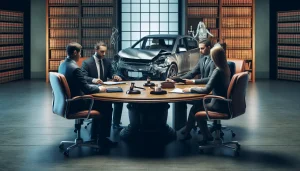
Dealing with Insurance Companies
Dealing with insurance companies after a motorcycle accident can be challenging. Insurance adjusters may attempt to minimize your claim or deny it altogether. Your lawyer plays a critical role in this process by:
- Negotiating Settlements: Skilled negotiation by your attorney can help ensure that you receive a fair settlement that adequately covers your damages.
- Handling Communications: Your lawyer can manage all communications with the insurance company, preventing you from saying anything that might harm your case.
- Understanding Policy Details: Lawyers are well-versed in insurance policies and can help you understand your coverage and rights, ensuring that you receive the benefits you are entitled to.
Legal Compensation
If you're injured in a motorcycle accident, you may be entitled to various forms of compensation, including:
- Medical Bills: Compensation for current and future medical expenses related to your injuries, including hospital stays, surgeries, medications, and rehabilitation.
- Lost Wages: Reimbursement for income lost due to your inability to work during recovery, as well as potential future earnings if your injuries result in long-term or permanent disability.
- Pain and Suffering: Monetary compensation for the physical pain and emotional distress caused by the accident and your injuries.
- Property Damage: Coverage for the repair or replacement of your motorcycle and any other personal property damaged in the accident.
Your lawyer will work diligently to ensure that you receive the maximum compensation for all your losses, helping you recover both financially and emotionally.
Preventive Measures
Safe Driving Tips for Car Drivers
Car drivers play a crucial role in preventing motorcycle accidents. Here are some key tips:
- Pay Attention to the Road: Always stay focused on driving and avoid distractions such as texting, eating, or using electronic devices.
- Follow Speed Limits: Adhere to speed limits and adjust your speed according to road and traffic conditions.
- Maintain a Safe Distance: Keep a safe distance from motorcycles, allowing them ample space to maneuver.
- Use Signals: Always use turn signals when changing lanes or making turns, and check mirrors and blind spots for motorcycles.
Safety Tips for Motorcyclists
Motorcyclists can enhance their safety by following these tips:
- Wear Protective Gear: Always wear a helmet, gloves, jacket, and other protective gear to minimize injuries in case of an accident.
- Be Visible: Use reflective clothing, keep your headlights on, and use turn signals to increase your visibility to other drivers.
- Ride Defensively: Stay alert and anticipate potential hazards. Be aware of other drivers’ blind spots and avoid riding between lanes of traffic unless necessary.
- Follow Traffic Rules: Obey all traffic laws, including speed limits and road signs, to reduce the risk of accidents.
Conclusion
Understanding auto and
Motorcycle accidents, and knowing the legal resources available, can make a big difference if you ever find yourself in such a situation. Always drive safely and know your rights.
Look for an attorney who has the right legal resources for your legal needs.
Contact us here on the
Warmuth Law website or through our hotline 888-517-9888.
Frequently Asked Question (FAQ's)
1. What should I do immediately after an Auto accident?
First, make sure everyone is okay and call for medical help if needed. Then, document the scene, take photos, and exchange information with the other driver. Contact the police to file a report.
2. How can I find a good lawyer for my accident case?
Look for lawyers who specialize in auto accidents. Check their reviews online, ask for recommendations, and schedule consultations to find the best fit for your case.
3. What evidence is crucial in accident claims?
Photos of the accident scene, witness statements, police reports, and any medical records related to injuries are all crucial pieces of evidence.
4. How do insurance claims work in Auto accidents?
You need to file a claim with your insurance company, providing all necessary documentation. Your insurance will assess the damage and may offer a settlement. Your lawyer can help negotiate if the offer is too low.
5. What are the common legal pitfalls in motorcycle accident cases?
Common pitfalls include not having enough evidence, not seeking medical help immediately, and not getting a lawyer's help. These can weaken your case and reduce your compensation.
 Common Causes of Motorcycle Accidents
Several factors contribute to motorcycle accidents, including:
Common Causes of Motorcycle Accidents
Several factors contribute to motorcycle accidents, including:



